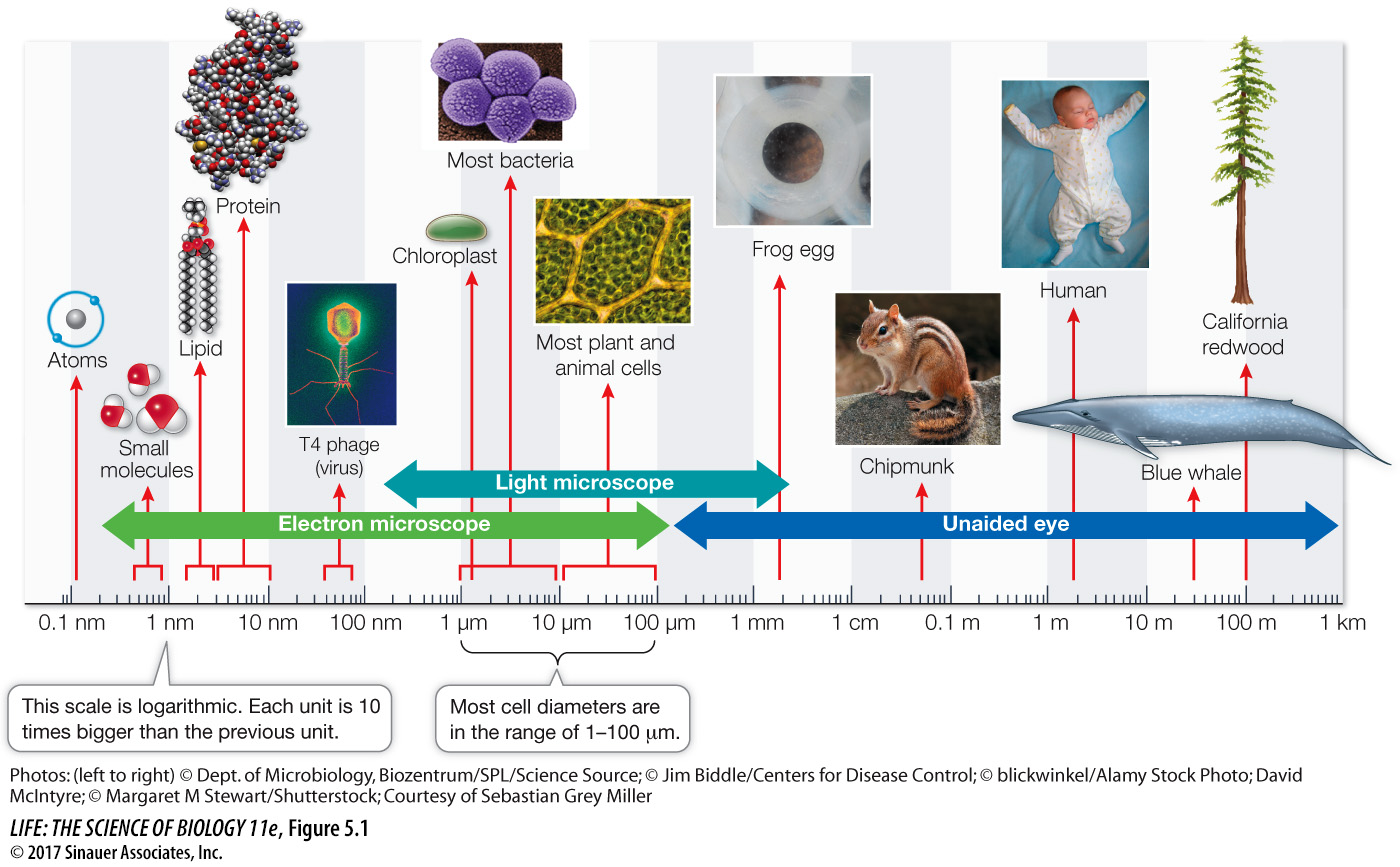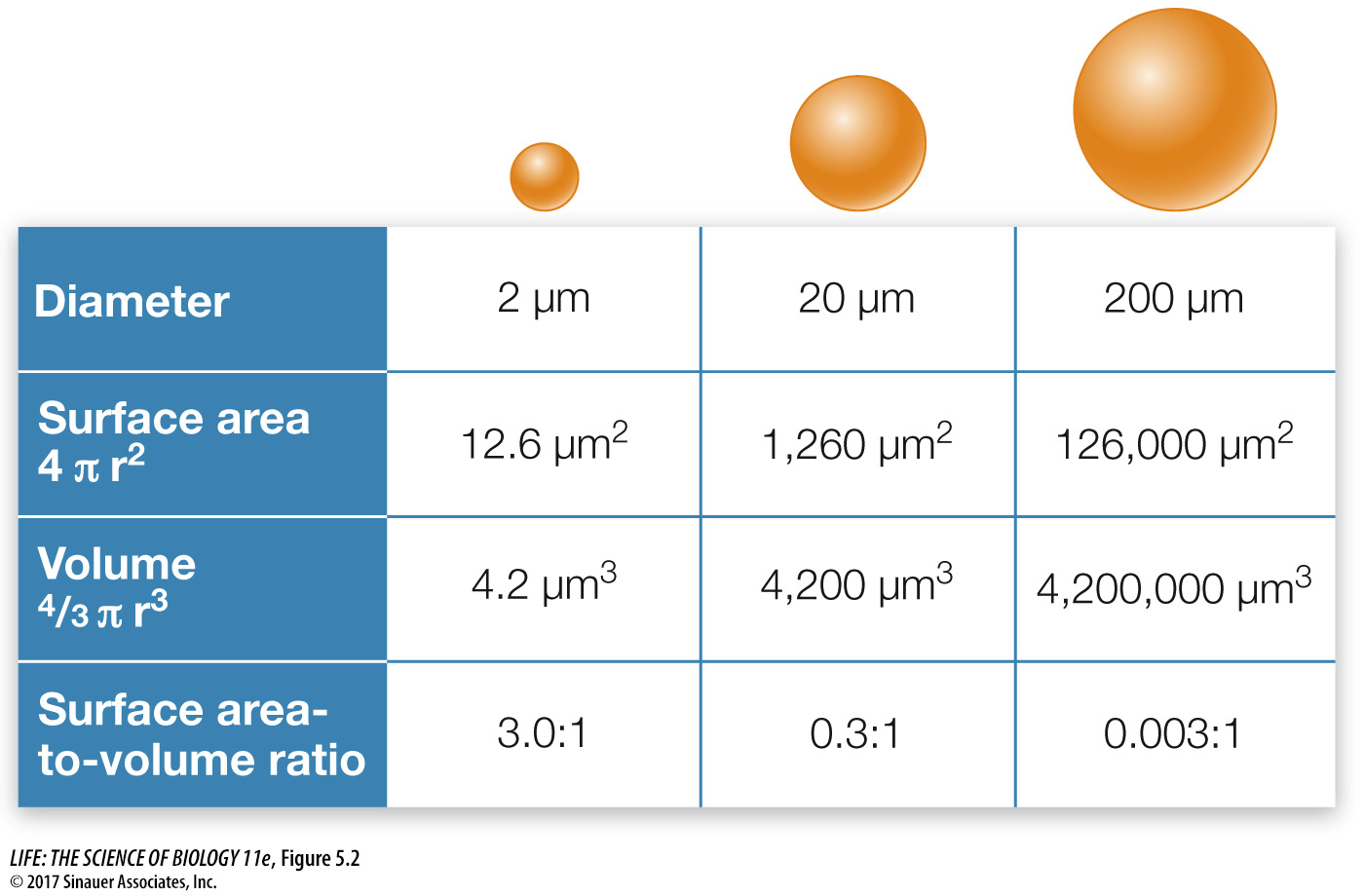Cell size is limited by the surface area-to-volume ratio
Most cells are tiny. In 1665 Robert Hooke estimated that in 1 square inch of cork, which he examined under his magnifying lens, there were 1,259,712,000 cells! The diameters of cells range from about 1 to 100 micrometers (µm). There are some exceptions: the eggs of birds are large single cells, and individual cells of several types of algae and bacteria are large enough to be viewed with the unaided eye (Figure 5.1).

Figure 5.1 The Scale of Life This logarithmic scale shows the relative sizes of molecules, cells, and multicellular organisms.
Activity 5.1 The Scale of Life
Small cell size is a practical necessity arising from the change in the surface area-to-volume ratio of any object as it increases in size. As an object increases in volume, its surface area also increases, but not at the same rate (Figure 5.2). This phenomenon has great biological significance. To appreciate this point, let’s assume that the amount of chemical activity carried out by a cell is proportional to its volume. The surface area of the cell determines the amount of substances that can enter it from the outside environment, and the amount of waste products that can exit to the environment.

Figure 5.2 Why Cells Are Small As an object grows larger, its volume increases more rapidly than its surface area. Cells must maintain a large surface area-to-volume ratio in order to function. This explains why large organisms are composed of many small cells rather than a few huge ones.
As a living cell grows larger, its chemical activities, and thus its need for resources and its rate of waste production, increase faster than its surface area. (The surface area, being two-dimensional, increases in proportion to the square of the radius, whereas the volume, being three-dimensional, increases much more—in proportion to the cube of the radius.) In addition, substances must move from one site to another within the cell; the smaller the cell, the more easily this is accomplished. This explains why large organisms must consist of many small cells: cells must be small in volume in order to maintain a large enough surface area-to-volume ratio and an ideal internal volume. The large surface area represented by the many small cells of a multicellular organism enables it to carry out the many different functions required for survival.

